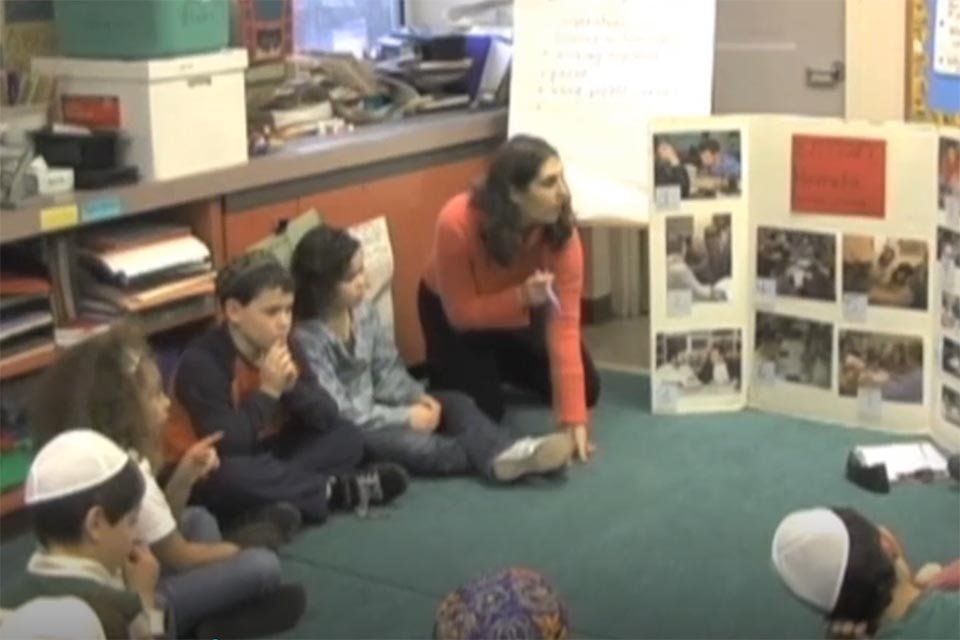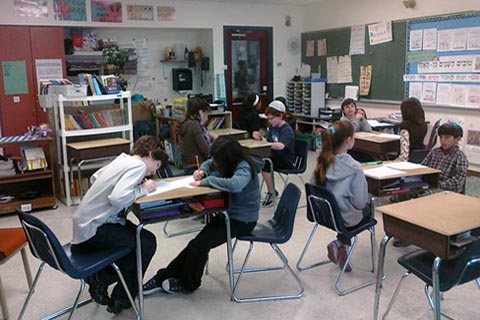Creating the Classroom Learning Environment
How does Jocelyn prepare students for havruta in a classroom beit midrash?
She structures the classroom environment in three main ways:
-
Intellectual preparation
-
Rituals
-
Bulletin boards
Jocelyn makes no assumptions about why havruta work is important. During the first unit of the year, she works with her students to understand why paired learning is a rich structure. They learn and practice skills that will guide their growth and independence for havruta study. Students also explore why Jews have been studying in this traditional fashion for so many years.
Then the class community decides how the classroom will look, sound, and feel during havruta time. Jocelyn and her students create their own rituals for transforming the space into a beit midrash.
Finally, the bulletin boards serve as a record of discussions about the text and student work. Jocelyn and her students can refer back to earlier recorded thoughts, and as a result, students begin to see how their ideas change over time. The links below explore how these components come together to create an environment rich with modern Jewish rituals, student oral thinking and questioning, and written student work.
Note: The volume in these videos is of varying quality. As you watch, you may wish to follow along in the accompanying transcript.
Intellectual Preparation

Video: What does a Beit Midrash look like?
Third-grade students explore how their classroom will be transformed during values lessons
Rituals
Third Graders Sing Beit Midrash Song
Composed and sung by Rabbi Larry Karol and third graders.
© Larry Karol 2008, Beit Midrash Song
Photos: Classroom Beit Midrash
Bulletin Boards
Note: Pedagogic Use of Bulletin Boards










